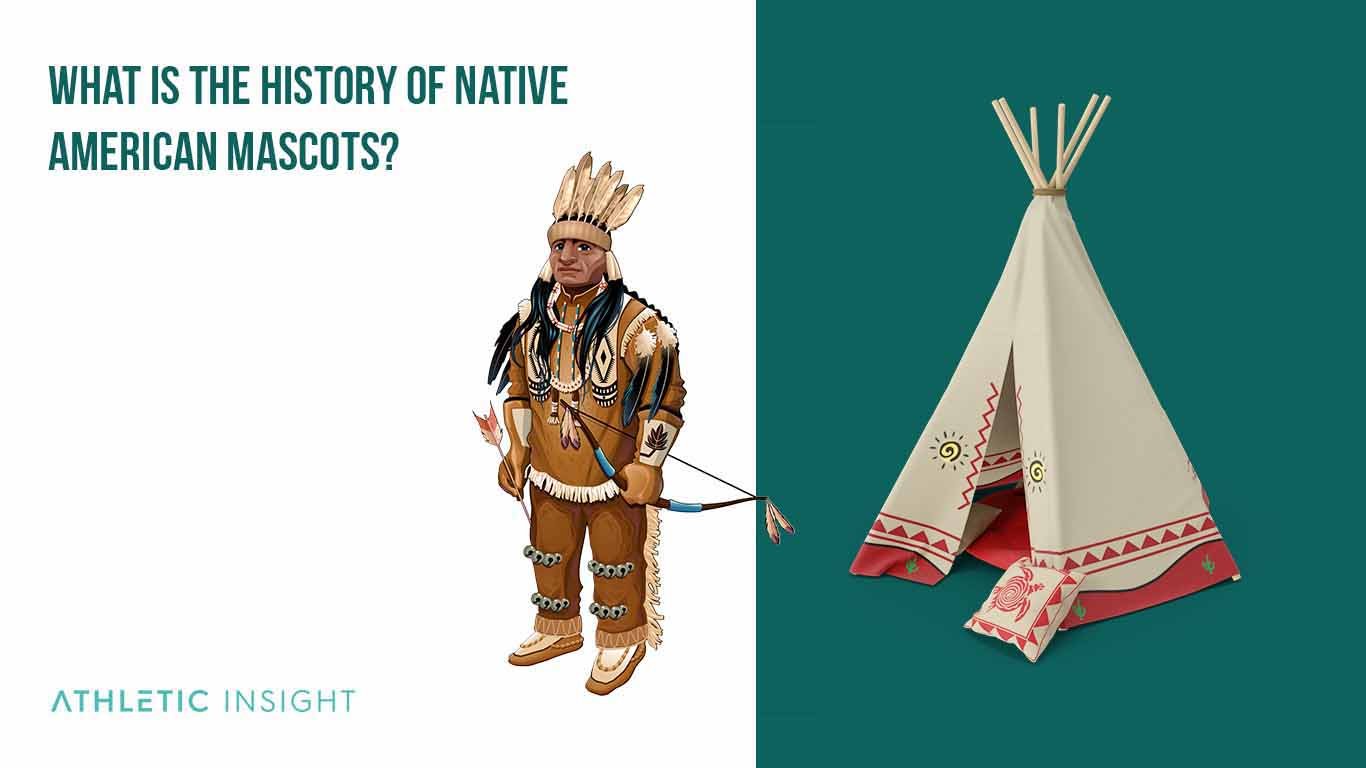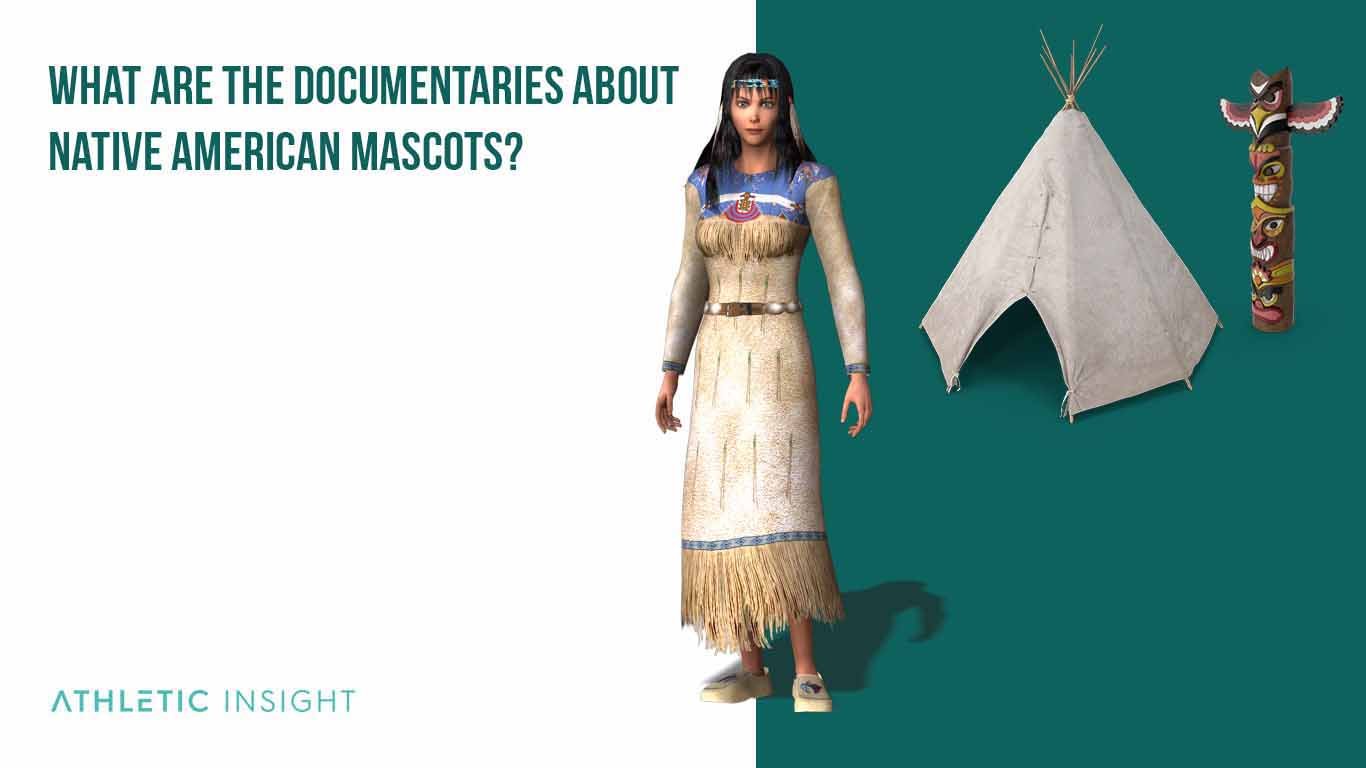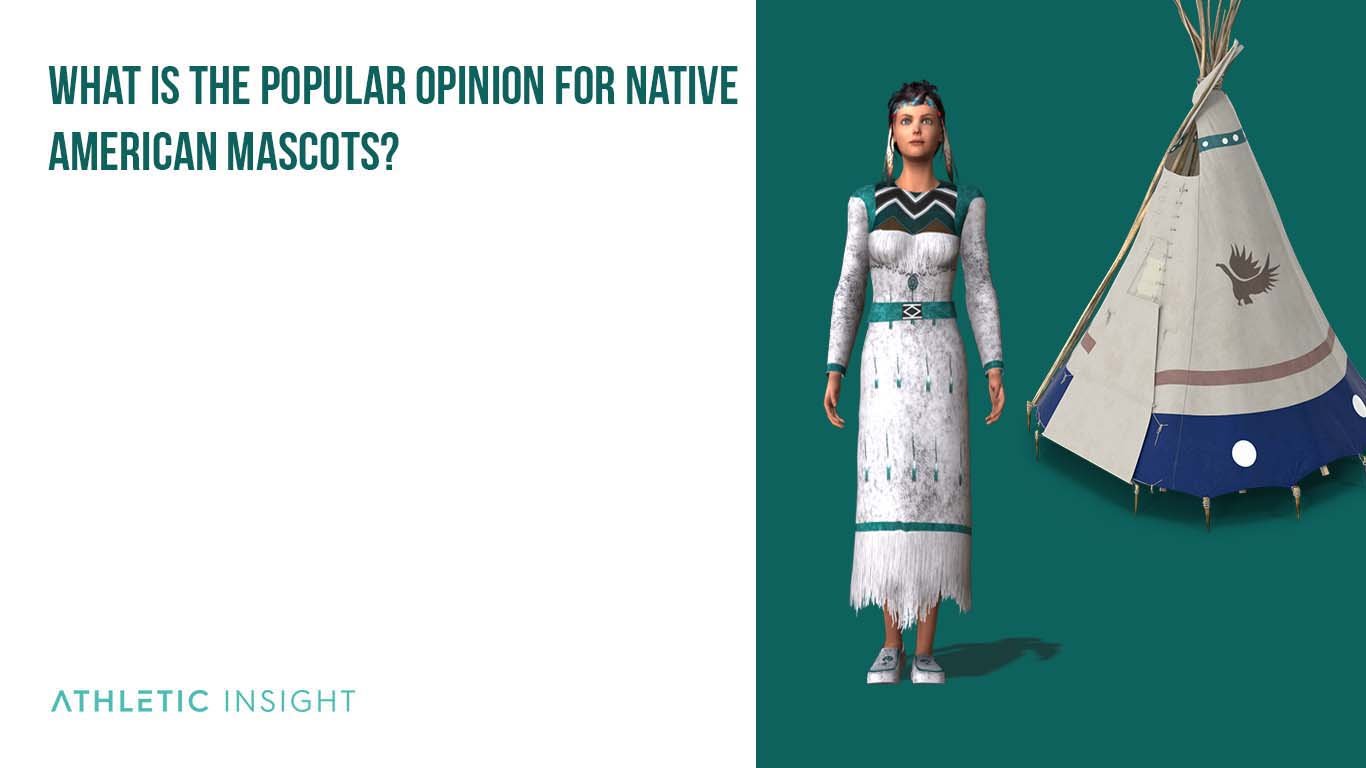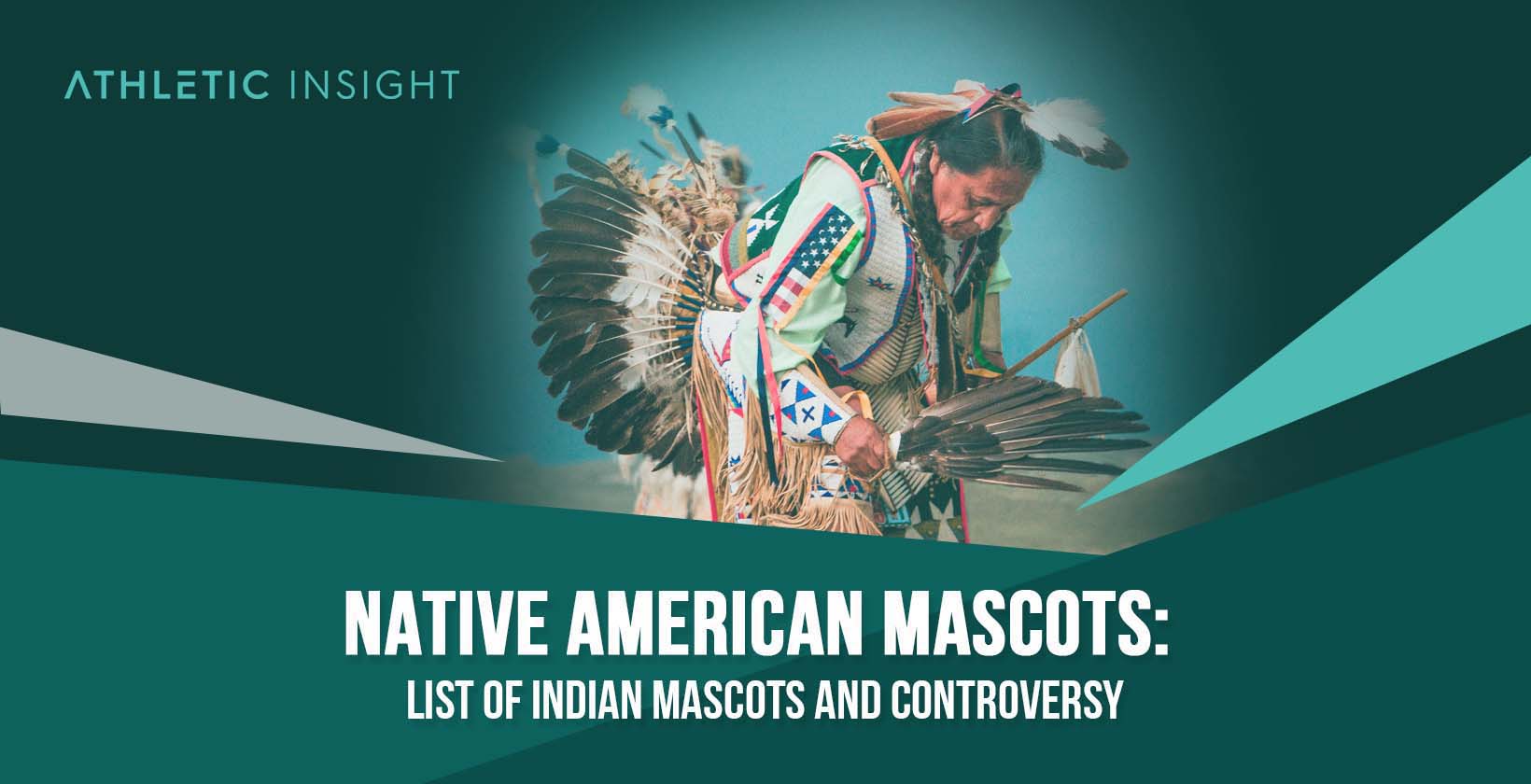A Native American mascot is when a team or organization uses Native American symbols to represent themselves. These teams may use images of Natives, their cultural symbols, or stereotypes that portray Native Americans in their mascots or as branding.
Professional teams that use or have used Native American mascots or symbols include the Atlanta Braves, the Chicago Blackhawks, the Kansas City Chiefs, the Cleveland Indians, the Edmonton Eskimos, the Golden State Warriors, and the Washington Redskins. There are also K-12 colleges that use Native American sports mascots.
The origin of Native American mascots dates back to the 19th century with groups such as the Improved Order of Red Men, which was a non-Native group that used Native American symbols.
Many of the professional sports teams that use or have recently used Native American images, like the recently renamed Washington Football Team, were founded in the early 20th century and were following the tradition of using Native American likelinesses for white-run groups.
Creating mascots that are supposed to represent Native Americans was prevalent throughout the 19th and early 20th centuries. Still, their popularity slowly diminished since the 1960s, when civil rights groups became more visible in their protests. Thus, many Native American mascots have been retired since the 1970s.
From a sociological perspective, Native American mascots give people the wrong ideas about Native Americans and perpetuate stereotypes about Natives. The use of mascots in schools is particularly troubling because schools are supposed to be places of knowledge, but even they can depict Natives as one-dimensional.
Civil rights groups have fought in the Native American mascot controversy for decades. These groups tend to view these depictions as disrespectful and offensive, especially considering that the teams were created by white people and because of the painful history that has been inflicted upon Natives by the broader American society.
When looking at public opinion concerning Native American mascots, polls regarding the Washington Redskins controversy shine a light on the broader issue. For most polls, between 60% and 79% of the general public favored keeping the name. Conversely, between 11% and 26% of people believed the name should definitely change.
Therefore, polling numbers show that the Native American mascot issue is debatable, but more people support these mascots.
In recent news, The Boston Globe reports that there has been a growing push to get rid of Native American mascots in Massachusetts schools. The changed opinion seems to come from larger trends in public views about racial justice.
Similarly, FOX 61 has revealed that more and more schools in Connecticut are also changing the names and symbols of teams depicting Native Americans. Supporters of the change maintain that sports teams shouldn’t use Native Americans as fun mascots that give real Natives no depth.
What Is the History of Native American Mascots?
Native American mascots gained popularity after professional teams, like the Boston Braves and the Cleveland Indians, adopted their names in the 1910s. In the decades after, many more teams from the elementary to professional levels began to name their teams after Native Americans.

Therefore, Native mascots sprung up in a time when American society either legally or socially prohibited Native Americans from using their languages, performing their rituals, and leaving their reservations.
The 1920s and 1930s saw many new teams name themselves for Native Americans. Native American high school mascots were particularly popular. The names and symbols remained popular throughout the 1940s and 1950s, even as many Natives could not enter the same buildings as white people.
In the 1960s, many Native American civil rights groups began to get more publicity leading to more and more Native mascots being retired throughout the 1960s and 1970s.
The 1980s and 1990s, likewise, saw more Native mascots disappear, and there was even a protest held at the 1992 Super Bowl when the Washington Redskins played in Minnesota.
By the early 2000s, large organizations like the US Commission on Civil Rights and the American Psychological Association were releasing statements asking for the retirement of Native American mascots.
Recently, 2020 and 2021 have been significant years for renaming professional sports teams that used Native American mascots. The Washington Redskins got rid of their name in July 2020. The Edmonton Eskimos and the Cleveland Indians quickly followed suit.
Overall, the primary teams that have faced public scrutiny have been professional teams from several different sports.
The Cleveland Indians, who were part of the MLB, changed their name to the Cleveland Guardians in 2021 after the Baseball Hall of Fame removed all depictions of their mascot, Chief Wahoo, from their plaques.
The Washington Redskins, part of the NFL, also removed their name and Indian head logo shortly after Nike pulled all their merchandise from their stores.
Other teams that still use Native imagery include the Atlanta Braves (MLB), who use the ‘tomahawk chop,’ the Chicago Blackhawks (NHL), who have a Native name and logo, and the Kansas City Chiefs (NFL), whose name is a reference to Native Americans.
According to political correctness, Native American logos, names, and mascots are frowned upon because they tend to marginalize and insult Native Americans.
The National Congress of American Indians (NCAI) has opposed Native American mascots for decades because they view them as harmful and demeaning, particularly noting the Atlanta Braves and Washington Redskins as offensive. However, the NCAI allows tribes to decide on whether or not they appreciate teams that use their names.
Similarly, several religious groups, such as the Central Conference of American Rabbis, the United Methodist Church, and the United Church of Christ, have called for an end to Native American imagery in sports teams.
What Is the List of Native American Mascots?
Below is a Native American mascots list with some of the more popular teams. However, the actual list is much longer.
- Florida State Seminoles (American College Football): Their mascot is Osceola, the historical leader of the Seminoles.
- Chicago Blackhawks (NHL): Their mascot is Tommy Hawk, a play on the word tomahawk. Tomahawks are a type of ax commonly used by many Native American tribes.
- San Diego State Aztecs (American College Football): The Aztec Warrior mascot comes from a particular class of infantry soldiers that were part of the Aztec army.
- Baldwin High School Braves (Georgia): The Braves mascot is a Native American named after the Atlanta Braves. The Atlanta Braves got their name from the Tammany Hall group, a political organization that used Native imagery and called their members Braves.
- Kansas City Chiefs: While the Chiefs use native american imagery, the team was said to be named after their founder.
Why Are Native American Mascots a Controversy?
There are three main reasons that Native American mascots are controversial—the controversy springs from people’s opinions about Native American mascots’ pros and cons. Also, there is debate about whether these mascots are a part of ethnic stereotyping.
The first reason is that not all Natives agree on whether Native American mascots are damaging. While almost all agree that many team’s symbols and names are offensive, there are exceptions. One example is a minor league team called the Spokane Indians. This baseball team has fostered ties to the Spokane tribe and has changed their symbology with input from the tribe.
The second reason is that there is much debate about whether the mascots are offensive or meant to honor Native Americans. Some people who show support for Native American mascots believe they are not offensive because they say that fans adore the Native imagery and, thus, respect Native Americans. Others say that the mascots are insensitive and only depict stereotypes.
The final reason is whether Native American mascots in schools violate Article VI of the Civil Rights Act of 1964, which prevents discrimination in programs that receive federally assisted funds. But deciding whether Native American mascots violate Article VI depends on the definition of discrimination.
One ongoing controversy involves the Atlanta Braves in Georgia, who use Native imagery such as the ‘tomahawk chop.’ Some people, including The National Congress of American Indians, believe that the team’s name and Native symbols should be retired.
Others, such as the Native man who played the Braves mascot, Chief Noc-A-Homa from 1969 to 1985, enjoy the team’s ties to Native Americans and find them honoring. Although he doesn’t believe that all sports teams with Native mascots are celebrating them, saying that the Redskins name is offensive.
Another controversy in Hillsborough County, Florida, has community members debating two high schools with Native American mascots. Some say that the mascots are disrespectful, while others cite the First Amendment’s freedom of speech, saying that the school has the right to choose any mascot and name they want.
Meanwhile, in Ohio, although the Cleveland Indians have recently changed their name to the Cleveland Guardians, the debate still rages on about whether the name and Chief Wahoo should have been retired. Some people have called Chief Wahoo the ‘red Sambo,’ but others have stated that the name and mascot honor Native Americans.
What are the Positive Arguments for Native American Mascots?
Here are some of the arguments supporting Native American mascots.
- The names have been in place for decades and some for more than a century.
- The mascots pay homage to Native Americans.
- Native American mascots focus on positive attributes like bravery, courage, and strength.
- The mascots keep the memory of Native Americans alive.
- Native mascots teach people about Native culture.
- Native Americans genuinely like the way sports teams portray them, and instead, it is white liberals who are the main protestors.
- Sports teams have a right to freedom of speech and should not have to change their names or mascots.
What are the Negative Arguments for Native American Mascots?
There are several reasons why Native American mascots are offensive. The main Native American mascot cons have to do with the belief that these mascots are lewd and racist, that these mascots and names were created by and enjoyed mainly by people who are not Native, and that the mascots are stereotypes that don’t represent actual Native people.
Native American mascots are often seen as racist because many people believe that the mascots only represent the stereotypes that white people, and non-Natives as a whole, believe that Native Americans are.
Many people who see the mascots as racist point out that white people created most of them, specifically at a time when Native Americans weren’t able to practice their own beliefs. Also, mascots tend to show a pan-Indianism that views all Native Americans as acting the same and, thus, erases individual culture.
Are Native American Mascots Offensive?
Overall, more and more people are beginning to support arguments against Native American mascots. However, people tend to view specific teams and depictions as more offensive than others.
For example, people often view the Washington Redskins and the Spokane Indians in different lights. Redskins is a word that dictionaries often define as outdated and offensive. Conversely, the Spokane Indians work closely with the Spokane tribe to ensure that their depictions are accurate and accepted by the tribe.
Yet, for the most part, over the last several decades, the mascots have been viewed as offensive. For example, in 1970, a spokesperson, Dennis J. Banks, for the American Indian Movement, said,
“In almost every game… I see some form of degrading activity being conducted by non-Indians of Indian culture! We Indian people never looked the way these caricatures portray us. Nor have we ever made a mockery of the white people. So then why do they do this to us? It is painful to see the mockery of our ways. It is a deep pain.”
What are the Court Cases involving Native American Mascots?
Here are some of the court cases involving Native American mascots.
- Pro-football, Inc v. Harjo (2005, An attempt to pull the Washington Redskins trademark was unsuccessful.)
- The Michigan Department of Civil Rights vs. the US Department of Education’s Office of Civil Rights (2015, The Michigan Department of Civil Rights filed a complaint saying that Native American imagery in schools violated Title VI of the Civil Rights Act of 1964. No violation was found.)
- Matal v. Tam (2017, The Supreme Court found that provisions of the Lanham Act that claimed that trademarks couldn’t be disparaging were unconstitutional.)
- The Pennsylvania Human Rights Commission v. Neshaminy (2019, The court ordered the Neshaminy regional school district to stop using logos that depict Native Americans in a negative light.)
- North Dakota-based group representing Native Americans vs. Colorado (2021, After Colorado, passed a law fining schools who used Native American names and symbols, a group filed a lawsuit claiming that the law is cultural erasure. The case is ongoing.)
Is it Legal to Use Native American Mascots?
The legality of the use of Native American mascots differs between states. For instance, Oregon prohibits using Native American names and symbols in public school mascots, and Colorado imposed a fine on public schools that use offensive Native American mascots.
Yet, overall, Native American mascots are legal in almost every state in the United States.
What are the Sports Teams with Native American Mascots?
The professional sports teams that still use Native American mascots or imagery are listed below.
- The Atlanta Braves still use the tomahawk chop, although their Indian mascot, Chief Noc-A-Homa, was replaced in 1986.
- The Chicago Blackhawks’ mascot is called Tommy Hawk, which is a play on the word tomahawk.
- The Kansas City Chiefs’ name comes from a former mayor who was interested in Native culture. The Chiefs’ mascot, Warpaint, was completely retired in July 2021.
What are the Documentaries About Native American Mascots?
Here is a list of the documentaries about Native American mascots.

- In Whose Honor? (1997) – This documentary tells the story of a Spokane Indian, Charlene Teters, who campaigned against the University of Illinois’s mascot, Chief Illiniwek. “In Whose Honor?” takes a stance against offensive Native mascots. Jay Rosenstein created the film.
- More Than a Word (2017) – “More Than a Word” explores the grassroots movements to eliminate Native American mascots. The film aims to educate the public about the history of Native Americans and why the mascots are offensive. John and Kenn Little of the Standing Rock Sioux tribe directed the movie.
- Imagining the Indian (2021) – This movie is about the movement to end the use of Native American names, slurs, and logos in sports culture. Aviva Kempner and Ben West are the film’s directors.
What is the Effect of Native American Mascots on Motivation of Sport?
Mascots, in general, are used to create a sense of identity. Other fans can easily see other people wearing their team’s names or pictures of their mascots and know that that person is in their group.
Sports teams with Native American mascots work the same way. When people see their team’s logos, names, and mascots, they feel included in something bigger than themselves. This identity motivates fans to become more involved in the group.
The problem with offensive mascots, names, and logos is that many people believe it negatively affect the people it portrays because it can give fans a one-dimensional view of an entire group of people.
On the other hand, some people believe that Native American mascots are positive symbols that honor the people that they represent.
Therefore, Native American mascots and symbols can both positively and negatively affect a team. Whether the pros outweigh the cons depends on a person’s opinions.
What is the Popular Opinion for Native American Mascots?
For the most part, popular opinion believes that sports teams should keep Native American mascots, although more people are starting to see the depictions as offensive.

One of the reasons that people don’t want mascots and logos to change is because they have become an essential part of their community’s culture. Sports teams create a shared experience that brings communities closer together, and involvement in that larger experience and identity can improve people’s self-esteem.
So, even with a controversial mascot, people still become emotionally involved with their team’s symbols. Therefore, as arguments against them rise, so do the arguments for Native American mascots.
What are the Trends for Native American Mascots?
Here is a list of recent Native American mascot trends in different areas of sports.
- Canada – Overall, Native American mascots in Canada have declined over the last few decades. One recent example was the renaming of the Edmonton Eskimos to the Edmonton Elks in 2021.
- United States – Native American mascots are also declining in the US even though many teams, especially K-12 school teams, still have Native American mascots and names.
- Universities and Colleges – Again, the numbers have gone down considerably in recent decades. Schools, in particular, have been attacked for being places of learning while also depicting inaccurate representations of Natives.
- Professional Teams – Several teams have been changing their Native American mascots since the 1970s. With the retirement of the Redskins name from the NFL in 2020, the few professional sports teams that still use Native mascots and images will likely fall.
- National Collegiate Athletic Association – Most Native American mascots have been retired from the NCAA. The University of Illinois at Urbana-Champaign got rid of their mascot, Chief Illiniwek, in 2007. The University of North Dakota retired their name, The Fighting Sioux, in 2015. Yet, the San Diego State University’s Aztec Warrior remains.
What Exercises and Sports Traditions Originate from Native American Cultures?
Native American cultures have contributed significantly to modern sports and exercises, with lacrosse being one of the most prominent examples. Originally played by Eastern Woodlands Native Americans and some Plains tribes in what is now Canada, lacrosse was more than a game; it was a spiritual practice, used for conflict resolution and to give thanks to the Creator.
Another traditional activity is the game of stickball, similar to lacrosse, which has deep roots in the cultures of the Southeastern tribes like the Choctaw, Cherokee, and Seminole. Running has also been a significant part of Native American culture, used for communication between tribes and villages over long distances and as part of ceremonial practices. The Tarahumara or Rarámuri people of Northwestern Mexico are renowned for their long-distance running abilities, often showcased in the traditional footrace known as Rarajipari.
How Do Traditional Native American Diets Influence Modern Nutritional Practices?
Traditional Native American diets, emphasizing whole foods, are influencing modern nutritional practices by promoting a return to natural, unprocessed foods for health and wellness. These diets were highly regional, consisting of a diverse array of plants and animals. Key components included corn (maize), beans, and squash (the “Three Sisters”), along with wild fruits, vegetables, and lean meats, especially bison, deer, and fish.
Modern movements, such as the “clean eating” trend, echo these principles by encouraging the consumption of whole, unrefined foods. Additionally, the Native American practice of eating seasonally and locally is gaining popularity in sustainable agriculture and farm-to-table initiatives. The resurgence of interest in these diets not only highlights the nutritional benefits but also the environmental and cultural values inherent in traditional eating practices.
Are There Supplements Derived from Native American Herbal Remedies?
Yes, many supplements on the market today are derived from herbal remedies traditionally used by Native American tribes. These include echinacea, used by the Great Plains tribes for its immune-boosting properties; goldenseal, which was utilized for its antiseptic qualities; and black cohosh, used by Eastern tribes for women’s health issues. Saw palmetto, employed by the Seminole tribe for urinary and reproductive issues, is another example.
It’s important to note, however, that while these supplements are based on traditional herbal knowledge, their effectiveness can vary, and they should be used under the guidance of a healthcare professional. Moreover, the commercialization of these traditional remedies raises ethical considerations regarding intellectual property and the rights of Indigenous peoples to their cultural heritage and knowledge.



